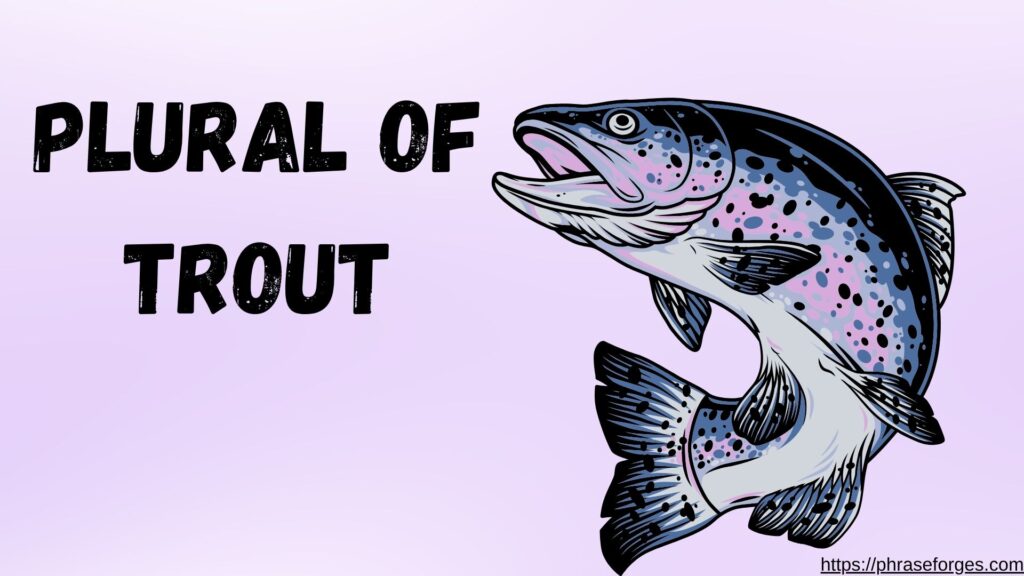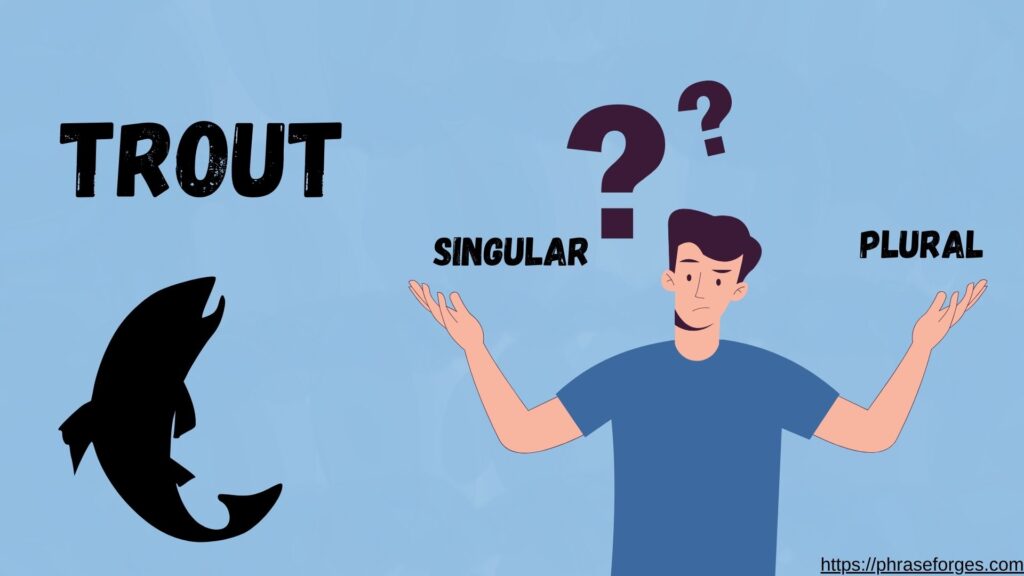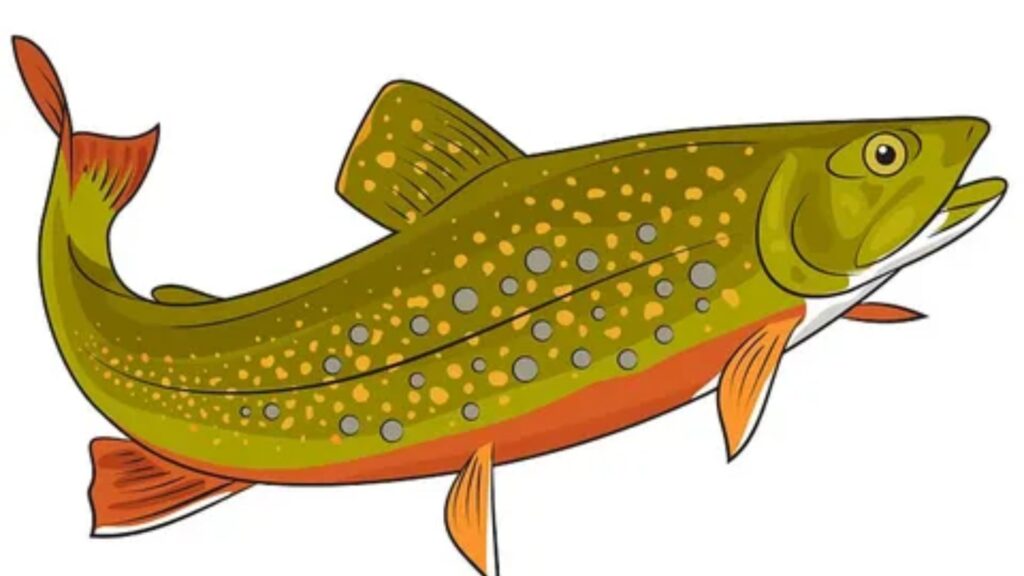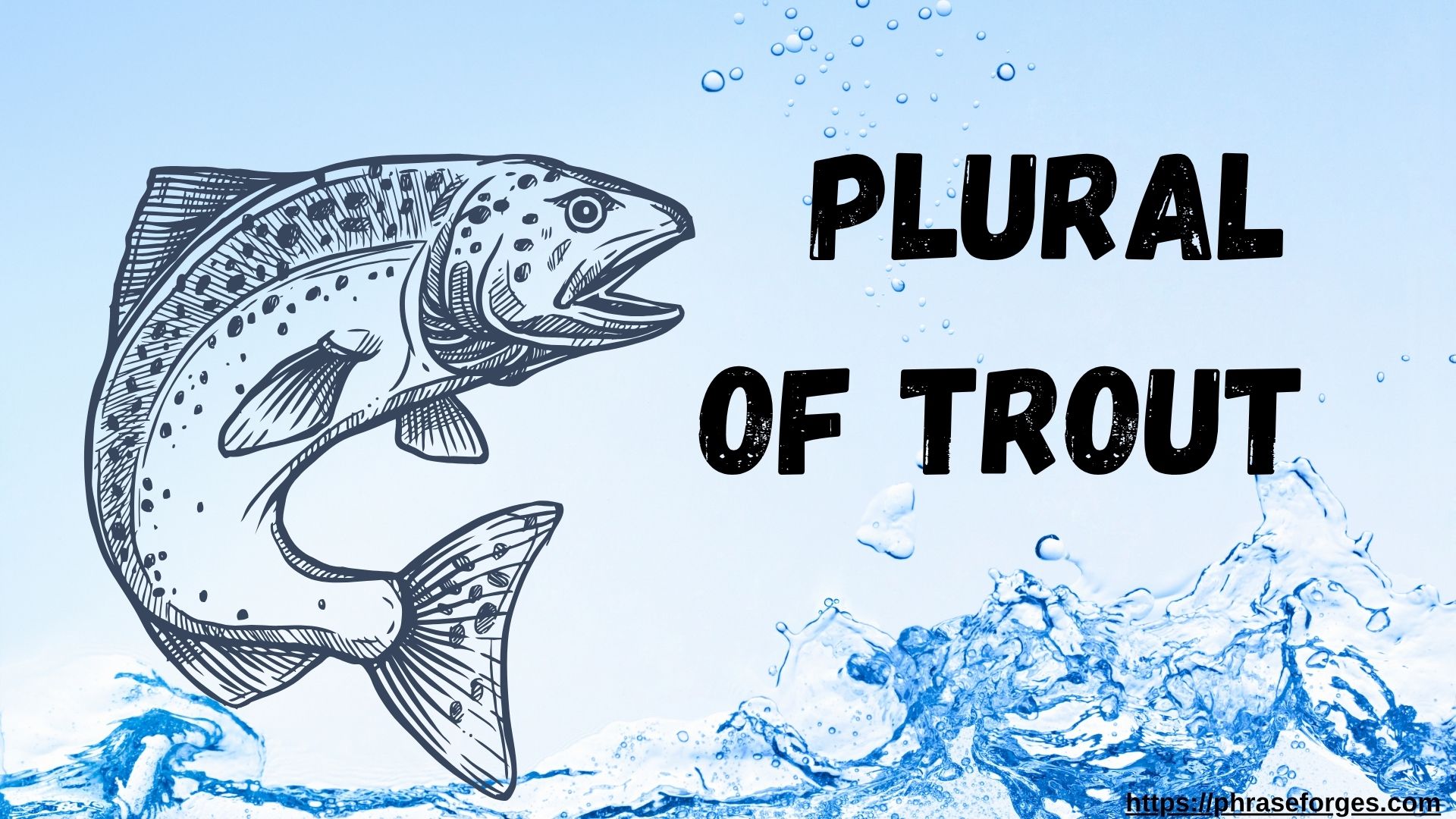If you’ve ever paused mid-sentence, wondering whether to say “trout” or “trouts,” you’re not alone. The plural of trout confuses many English learners and even native speakers because it doesn’t follow the typical pluralization rule of simply adding “-s.” So, what is the plural of trout? Let’s break it down clearly and see how you can use it naturally in sentences and even emails.
What is the Plural of Trout?

The correct trout plural form is simply “trout.” Unlike most nouns in English, it doesn’t change between singular and plural.
✔ Singular: I caught a trout in the river.
✔ Plural: We caught five trout yesterday.
This makes trout part of a unique category in English known as “nouns that stay the same for singular and plural.” Other examples include moose, deer, salmon, elk, bison, and fish.
However, you might occasionally see “trouts,” especially in older texts or when referring to different species (e.g., brook trout vs. golden trout). This is known as a species pluralization rule and is grammatically acceptable in scientific contexts.
Why Does Trout Stay the Same?
This comes down to etymology and species-based pluralization rules. Like “fish” or “salmon,” trout originated from Old English and Old French roots where the plural didn’t require “-s.” Over time, English grammar preserved this invariant plural form, especially for animal names associated with species or groups.
Trout in Context: Examples and Usage
Here’s how to use “trout plural” correctly in real-world scenarios.
Everyday Conversation Example:
- Singular: “I saw a huge trout in the lake this morning.”
- Plural: “We saw several trout swimming near the rocks.”
Professional Email Example:
📧 Subject: Trout Population Report
Hi Rebecca,
During last week’s survey, our team recorded over 200 trout in the upper stream, including a few Brook trout species. This suggests healthy breeding conditions.
We’ll be updating our records with precise counts of rainbow trout next week.
Best regards,
Liam Parker
Wildlife Research Coordinator
Is Trout Singular or Plural?

Here’s the simple answer: It’s both. Context tells you whether trout is singular or plural. Compare:
- Singular: “That trout looks fresh.”
- Plural: “These trout are from Alaska.”
This is similar to words like moose or deer the form doesn’t change, but the meaning does.
When to Use “Trouts”
While uncommon in everyday English, “trouts” may appear in scientific writing or when talking about species differences:
- “The study examined three trouts: rainbow, golden, and brook.”
In regular conversation, however, stick with “trout” for both singular and plural.
Comparison with Other Fish-Related Plural Forms
Understanding trout plural form becomes easier if you compare it to similar nouns:
- Fish: Singular and plural are the same (“I caught one fish” / “I caught three fish”), but “fishes” can mean different species.
- Salmon: Always singular and plural (“Two salmon were spotted”).
- Moose: Same form for both singular and plural (“One moose” / “Two moose”).
This pattern highlights species-specific pluralization in English.
Quick Reference Table: Nouns That Stay the Same for Singular and Plural
| Noun | Singular Example | Plural Example |
|---|---|---|
| Trout | I caught a trout. | We caught several trout. |
| Moose | A moose crossed the road. | We saw two moose. |
| Deer | I spotted a deer. | We saw five deer. |
| Salmon | A salmon leapt upstream. | Many salmon were spawning. |
| Bison | A bison roamed freely. | Bison populated the plains. |
| Elk | An elk grazed nearby. | Elk gathered in herds. |
| Fish | One fish swam past. | Ten fish swam together. |
Common Mistakes & Fixes
- ❌ Incorrect: “I saw many trouts in the stream.”
✅ Correct: “I saw many trout in the stream.” - ❌ Incorrect: “Are trouts native to this region?”
✅ Correct: “Are trout native to this region?” - ❌ Incorrect (except in species context): “Different trouts live here.”
✅ Correct (casual use): “Different trout live here.”
Study Tip: Remembering Singular = Plural Nouns

Here’s a quick way to remember:
If the noun names a species of animal or fish, check if it follows the “no –s” rule.
Think “trout = moose” (no change), versus “cat = cats” (regular plural).
Another Email Scenario: Business/Restaurant Context
📧 Subject: Fresh Trout Delivery Inquiry
Hi Thomas,
We’re updating our menu for the weekend and would like to confirm your fresh trout supply.
Can you provide pricing for ten pounds of rainbow trout and brook trout species? We’re particularly interested in sustainable sources.
Thanks in advance,
Evelyn Sanders
Executive Chef, Bluewater Bistro
Final Thoughts
The plural form of trout is one of those delightful quirks of English grammar that feels odd at first but soon becomes second nature. Remember:
- Use “trout” for both singular and plural.
- Reserve “trouts” only for species distinctions or scientific writing.
- Keep in mind that trout belongs to the group of nouns that stay the same regardless of number, just like moose, deer, salmon, and bison.
Once you’ve mastered this, spotting and using singular and plural noun forms like these will feel effortless.

